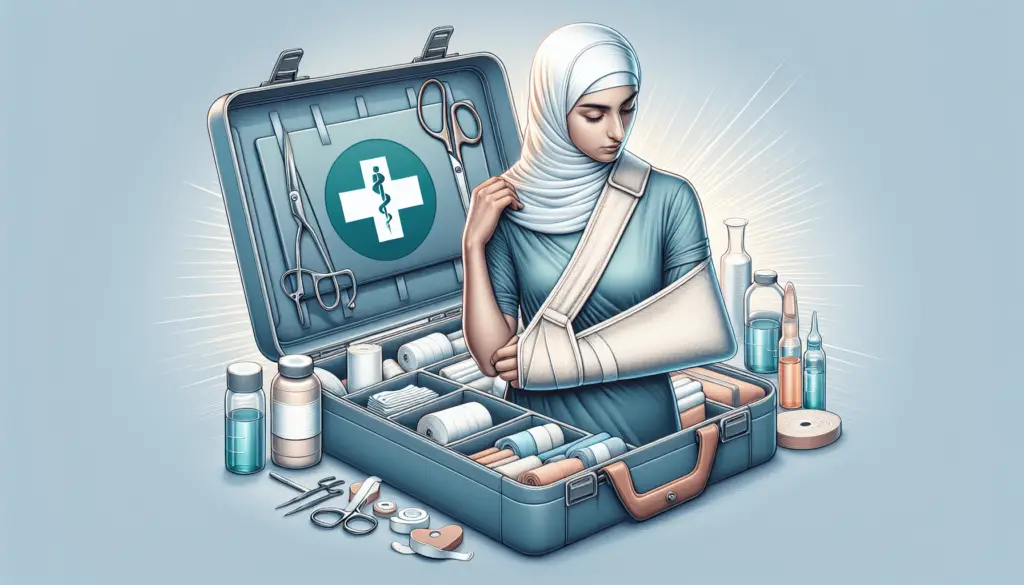In this article, you will discover the essential first aid basics that every prepper should be familiar with. We all hope for the best, but it’s crucial to be prepared for any unexpected situations that may arise. Whether you’re in the wilderness, at home, or out on an adventure, having a solid understanding of first aid can make a significant difference in emergencies. From treating minor injuries to knowing how to handle more severe situations, equipping yourself with these fundamental skills may just save a life. So let’s explore the key first aid principles for all you preppers out there.
Importance of First Aid Knowledge
First aid knowledge is a crucial skill that everyone should possess. It ensures an immediate response to injuries, potentially saving lives in emergency situations. Whether it’s a minor scrape or a life-threatening incident, having the ability to provide critical support before professional help arrives can make all the difference. By familiarizing yourself with the basics of first aid, you can become a valuable asset in times of distress.

Assessing the Situation
When faced with an injury or medical emergency, it’s important to stay calm and composed. Panicking can cloud your judgment and hinder your ability to provide effective assistance. Take a deep breath, assess the situation, and make a mental note of any potential dangers in the surroundings. Ensuring your safety and the safety of others should always be your top priority.
Once you have established a sense of calm, determine the nature and severity of the injury. Is it a minor cut, a broken bone, or something more serious? By evaluating the situation, you can quickly identify the level of care required and take appropriate action.
Basic Life Support (BLS)
Basic life support (BLS) techniques are essential skills that can help sustain life until professional medical help arrives. Being knowledgeable in performing CPR (Cardiopulmonary Resuscitation) is of utmost importance, especially in cases of cardiac arrest. This life-saving technique involves chest compressions and rescue breaths, which can help maintain blood circulation and oxygen supply to vital organs.
Additionally, understanding the signs of a heart attack or stroke can significantly impact the chances of a successful recovery. Learning to recognize these symptoms promptly allows you to intervene quickly, potentially preventing further damage or even saving a life.
Managing choking and airway obstructions is another critical aspect of BLS. By knowing how to perform the Heimlich maneuver or clearing airway obstructions, you can prevent choking-related complications and provide immediate relief.
Wound Care and Dressings
Accidents happen, and being equipped with the necessary skills to clean and disinfect wounds is vital. Proper wound care reduces the risk of infection and facilitates the healing process. Begin by cleaning the wound gently with clean water or a mild antiseptic solution, removing any debris or foreign objects. Applying pressure to control bleeding and using appropriate dressings and bandages can also help promote healing and protect against further injury.
Managing Broken Bones and Sprains
Assessing fractures and dislocations requires knowledge of bone anatomy and the ability to identify common signs and symptoms. By understanding the difference between a dislocated joint and a fracture, you can provide appropriate initial care, further preventing additional damage or complications. Immobilizing injured limbs using splints or improvised supports can help minimize pain and prevent further harm during transportation to a medical facility.
Sprains, on the other hand, are common injuries that can be effectively managed with proper first aid techniques. Elevating sprained joints and applying ice or cold compresses can reduce swelling and relieve pain. Learning to identify the severity of a sprain and providing immediate care can significantly contribute to the recovery process.

Recognizing and Treating Allergic Reactions
Allergic reactions can range from mild to severe, and it’s crucial to be able to identify common allergens and their associated symptoms. Recognizing the signs of an allergic reaction allows you to act promptly, preventing potential life-threatening conditions such as anaphylaxis.
For mild allergic reactions, using antihistamines or topical creams can help alleviate discomfort and reduce symptoms. However, in severe cases, where anaphylaxis-induced cardiac arrest may occur, it’s essential to administer a dose of epinephrine immediately. Understanding the correct dosage and proper administration is critical in these situations, as it can be the difference between life and death. Additionally, knowing CPR for anaphylaxis-induced cardiac arrest is crucial, as providing immediate resuscitation can greatly increase the chances of survival.
Handling Burns and Scalds
Burns and scalds can cause immense pain and immediate action is necessary to minimize tissue damage. By evaluating the severity of burns, you can determine the appropriate course of action. First-degree burns, which typically cause redness and mild pain, can be managed by applying cooling water to reduce pain and prevent further damage. Covering burns with sterile dressings creates a barrier against infection and facilitates the healing process.
For more severe burns, such as second or third-degree burns, it is imperative to seek professional medical help immediately. However, in the interim, you can manage these injuries by following proper first aid protocols. Avoid using ice or very cold water on severe burns, as it can potentially exacerbate the injury. Instead, cover the affected area with a clean, non-stick material and elevate if possible.
Dealing with Heatstroke and Hypothermia
Heatstroke and hypothermia are serious medical conditions that require immediate attention. Understanding the symptoms and appropriate actions to take can save lives. In cases of heatstroke, recognizing signs such as dizziness, headache, and high body temperature is crucial. To cool the body down, move the person to a shaded area, remove excess clothing, and apply cool water or wet towels to the skin.
Hypothermia occurs when the body loses heat faster than it can produce it, typically due to exposure to cold temperatures. Providing warmth and insulation by covering the person with blankets or warm clothing is vital. Gradual rewarming is necessary to prevent shock and other complications associated with hypothermia. Seek medical attention as soon as possible to ensure proper evaluation and treatment.
Emergency Medicine and Medication
In emergency situations, having access to essential medications like painkillers and antibiotics can be lifesaving. Stocking up on these medications and understanding their proper dosage and administration guidelines is essential. Knowing when and how to administer medication during an emergency can mitigate pain, manage infections, and improve the overall outcome.
However, it’s important to note that administering medication should only be done when professional medical help is not immediately available, and under the guidance of a healthcare professional if possible. Following the proper protocols and seeking medical advice when possible is always recommended.
Creating a First Aid Kit
Having a well-equipped first aid kit is essential in any emergency. It ensures that you have the necessary supplies readily available to provide first aid when needed. The contents of a first aid kit may vary, but some essential items include bandages, gauze pads, adhesive tape, antiseptic solution, antihistamines, painkillers, scissors, tweezers, a thermometer, and gloves.
Regularly checking and replenishing the contents of your first aid kit is equally important. Medications may expire, and items may become damaged or depleted over time. By ensuring that your first aid kit is well-stocked and up to date, you can be confident in your ability to respond to emergencies effectively.
In conclusion, first aid knowledge is a valuable skill that everyone should possess. It ensures an immediate response to injuries, potentially saving lives in emergency situations. By familiarizing yourself with basic life support techniques, wound care and dressings, managing broken bones and sprains, recognizing and treating allergic reactions, handling burns and scalds, knowing how to deal with heatstroke and hypothermia, understanding emergency medicine and medication, and creating a well-equipped first aid kit, you can be prepared to provide critical support before professional help arrives. Remember, your knowledge and action can make a significant difference in times of distress.
